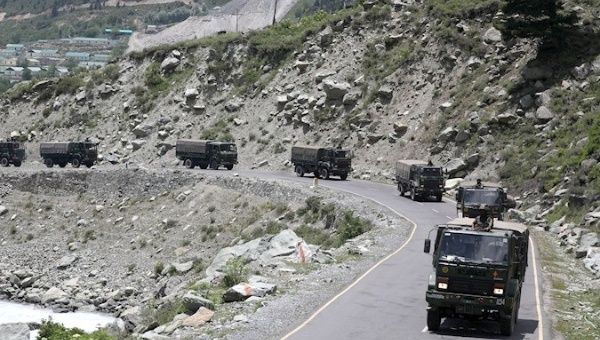TTT New Delhi – China has once again flaunted its absurdity by spreading a canard that it used electromagnetic technology against Indian troops, boiling the skins of the victims, and thus forcing them to retreat to their command camp during the highly publicised Indo-China border standoff in ‘August’.
The latest attempt at Beijing-born disinformation was engineered through Jin Canrong, Dean of the School of International Studies at the Renmin University of China in Beijing as reported in European media this week.
The claims were soon picked up by social media portals and rightly ridiculed.
The news, dismissed by the Indian government in New Delhi as fake, had all the ingredients of a potboiler after Canrong claimed the non-lethal weapon was deployed in August.
“Within 15 minutes of the weapons being deployed, those (Indian soldiers) occupying the hilltops all began to vomit. They couldn’t stand up, so they fled. This was how (we) retook the ground,” the professor alleged during a lecture, and as was quoted in a UK based newspaper.
India clarified that the troops ‘involved’ had returned – safely – in July after the first round of disengagement talks, and the Chinese had moved back from areas it occupied known as ‘fingers’ because of their geographical appearance.
These ‘fingers’ jut into eight parts of the Pangong Tso – a lake stretching over 130 kilometres in length.
The inside story is that China is now operating in retaliation mode – as ridiculous as the claims are – after seeing the impressive display of India’s hypersonic missile known as ‘BrahMos’ during recently held military exercises in the Indian Ocean.
The missile can be launched from any platform on land, in the air, or on water and is capable of hitting targets 400 kilometres away.
It is reported to be stationed 180 kilometres inside Indian territory, not far from the Chinese border.
The BrahMos missiles have an advanced CAP (capability, accuracy and precision) system which has sent shivers down the spine of the People’s Liberation Army (PLA) which sees it as a close match for its own DF-17 and DF-24 cruise missiles.
The Indian componentry and the complete missile system is thus capable of giving China a significantly bloody nose in any theatre.
Indian army sources here in New Delhi have now said that China has thus finally realised the strength of the Indian army – a realisation that began during the recent Galwan Valley incident in which Chinese casualties mounted, although they were never fully disclosed.
India meanwhile is continually watching the threat posed by the cruise missiles of China as any war with Beijing may see lot of fireworks given that PLA missiles have the capacity to manoeuvre and destroy targets from land-launchers sited almost 1000 miles away and can travel at speeds of almost two miles per second.
President Xi Jinping, fearing economic isolation and backlash from neighbouring countries for recent actions by Beijing has, however, stated, fortunately for now, that China would not separate itself from the U.S. and other trading partners in Europe over technology and security issues.
There has been no mention of discontinuing the import and export of combat systems though.













